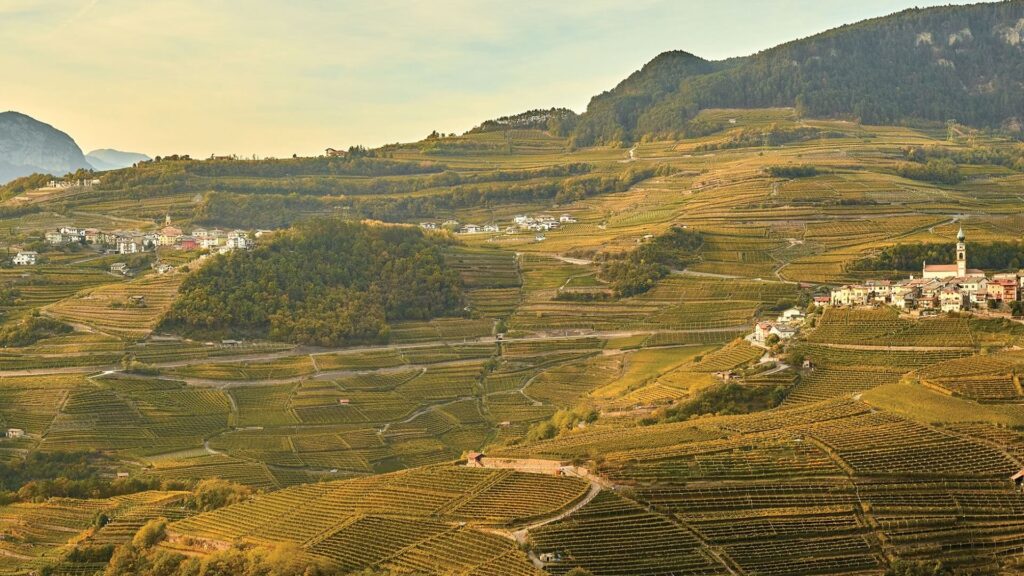Riesling is a noble and ancient German aromatic grape variety, records of which date back as far as 1435, renowned for its incredible freshness and crisp acidity, as well as its extraordinary potential for longevity, it’s a variety that also finds a perfect home in parts of Italy, such as the Val di Cembra, the cradle of heroic viticulture in Trentino.
Trentino Riesling: Cembra Valley
Here the altitude and harsh mountain climate allow Riesling to adapt perfectly and express its elegant facets to the fullest. One of Riesling’s greatest characteristics, in fact, is its remarkable resistance to the frigid climate: in order to withstand the freezing temperatures of its native place, the vine has endowed itself with an extremely hard stump wood and has developed a late bud break. Thanks to the long growing season and the late ripening of the grapes, Riesling brings out all its aromas while maintaining a vibrant acidity that ensures its capacity for evolution and longevity.

In this context, the Cembra Valley, the cradle of Trentino Riesling’s heroic viticulture, meets all the requirements demanded by the noble German grape variety and allows for excellent cultivation along the impervious Cembran terraces. The steepness of the slopes, the harsh winter months preceding cool and sunny summers, the marked temperature ranges, and the constant breeze of the Ora del Garda are factors that favor the healthiness of the grapes and the development of unparalleled aromas.
The introduction and spread of Rhine Riesling in Trentino date back to around the end of the 1800s: from the very beginning, the noble German variety found in these Alpine slopes an ideal habitat where it could best express its distinctive character.

Cembra Cantina di Montagna Riesling
Through the “Zoning Project” Cembra Cantina di Montagna, in particular, has identified Vigna Cancòr as an ideal cru for the cultivation of Riesling, which, despite its character little inclined to be tamed, benefits from a perfect synergy between the climate and the particularly suitable soil.
Vigna Cancòr rises in a clearing not far from the village of Cembra at about 480 meters above sea level, facing south/southwest: the steepness of the slopes where the lush vines grow guarantees optimal exposure to the sun’s rays. The brownish soil of fluvioglacial origin is predominantly sandy (60%) and has a good persistence of silt and a clay level of 7-8%. The texture is loose, rather skeletal, and quite porous. Yields are limited in order to achieve concentration and the highest expression of varietal quality, enhanced by guyot cultivation, which tends to further raise the quality of the grapes.

Italian Riesling Characteristics The result is a heroic and much sought-after Riesling, first released in 2011 and produced in a limited run of about 3,000 bottles. Elegant, aristocratic, and distinguished, the Vigna Cancòr by Cembra Cantina di Montagna enjoys a zippy acidity and a balanced structure. Vinification and elevage sur lies take place mainly in steel with a minimal part in wood (10%), in order to enhance the varietal complexity and evolution of the wine over time. Pronounced and savory, on the nose it presents intriguing notes of white peach, apricot, pistachios, and candied fruit, which over the years give way to developing notes of flint and hydrocarbon that distinguish this variety.